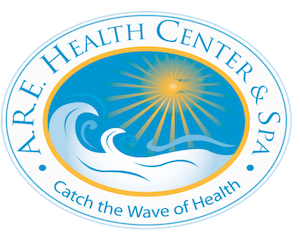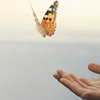The Coronavirus COVID-19 is spreading around the United States and the globe. Though the Washington Post reports that 80% or more of the cases are mild, many people have died, including several in the United States. In this time of heightened awareness and fear, it is helpful to take a calm look at what will help us avoid the virus. People in Edgar Cayce’s day were also acutely aware of all the germs around them – and that many of those germs caused disease. Cayce lived through the devastating 1918 flu epidemic that killed 1 out of every 150 Americans, and many of the Edgar Cayce health readings described ways that people could prevent death from flu viruses and other illness. Eating a healthy diet, taking time to relax and exercise, spending time outside, avoiding constipation, engaging in meditation and prayer - all are Cayce-recommended actions that modern health research suggests support the immune system to fight off infections like COVID 19. Numerous Cayce readings also emphasize the importance of keeping the body clean to stay healthy. Simple hygiene remains the number one way we can all protect ourselves and prevent the spread of disease.
The graphic below, supplied by Centers for Disease Control (CDC) gives complete current recommendations on how to deal with the coronavirus. COVID 19, like most common respiratory diseases, seems to be transmitted primarily through the air. When someone who is infectious coughs, sneezes, or even talks, germs can aerosolize into dangerous airborne droplets that can be inhaled or can contaminate objects. An unsuspecting person can then contact the infected person or the contaminated object and transfer the germs into their body by touching their eyes, nose, or mouth. Though many viruses live only a few hours on inanimate objects, a few can live for more than a week. Scientists are trying to learn more about the COVID 19 virus. No matter what the lifespan of this virus turns out to be, the Centers for Disease Control experts are recommending that we practice excellent hygiene to combat the possibility of transferring the infection to ourselves. In public spaces like stores, the workplace, and certainly medical facilities, being a germaphobe is a good idea. Obsessive hand hygiene after being in public settings will decrease chances that we will contract COVID 19, or other viruses or bacteria. Avoiding touching our faces will reduce opportunities for the virus to colonize our airways. Such vigilance is especially important in those over 65 or those with chronic conditions like heart disease, diabetes, or COPD.
Hand sanitizers are a good way to improve hand hygiene. Alcohol-based hand sanitizer, scrubbed over all hand surfaces until it dries, does a great job of getting rid of most bacteria and viruses. The best way to eliminate germs like COVID 19, however, is by thorough hand-washing. Most of us need to improve our handwashing practice. Recommended handwashing technique involves wetting the hands with warm or cool water since hot water can break down the skin and open small fissures that germs can enter. Use a generous amount of mild soap, not antibacterial soap, and lather all the way up to the wrists. Scrub all hand surfaces for 15-20 seconds, the time it takes to sing 2 rounds of the Happy Birthday song. Rinse with running water and then dry the hands thoroughly. With little time and effort, we can safely get rid of disease-causing bacteria and viruses on our hands. While we are on alert for further recommendations from the CDC, handwashing can become a practice of mindfulness in our daily lives and the best way to protect ourselves from COVID 19 and other illnesses.
These should be kept as clean and as clarified as there should be for the physical; for, as has oft been said, bodily cleanliness makes for bodily godliness, and this should be comprised always in the lives and the activities of every individual.
- Edgar Cayce reading 5648-4
1https://www.researchgate.net/publication/236906791_The_pathophysiology_of_the_hygiene_hypothesis
2https://msutoday.msu.edu/_/pdf/assets/2013/hand-washing-study.pdf









